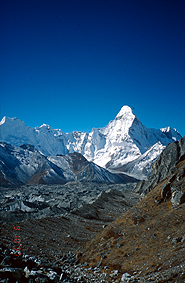|
This page
illustrates the extensive magmatic layering developed in the
tml-gnt-ms-bt leucogranites of the Nuptse area in the Khumbu valley in
Nepal. Layering here is beautifully developed, and locally magmatic
deformation deforms the original layering in systematic ways. Layering
can be defined by tml, gnt or feldspar. Some beautiful comb layering
(unidirectional structures) are also well-developed. Some but not all
the images shown have
been published in Weinberg and Searle (1999).
The purpose here is to illustrate the structures and trigger
discussions, ideas and potential collaborations. If you want to help
expand this site or connect your own related
page to this one please let me know.
Weinberg, R.F. and Searle, M.P. 1999, Volatile-assisted intrusion and autometasomatism of leucogranites in the Khumbu Himalaya, Nepal, J. Geol. 107, 27-48. |
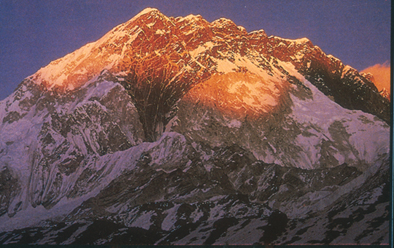 Nuptse
Peak, Khumbu, close to Everest, Nepal. Nuptse
Peak, Khumbu, close to Everest, Nepal. The Nuptse pluton forms the two semi-circles. |
Magmatic layering in S-type tml-gnt-ms-bt Himalayan leucogranite
All layering shown is 3D, as most features were photographed from blocks
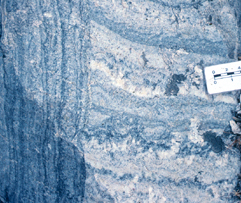
A) Two different styles of layering nearly orthogonal |
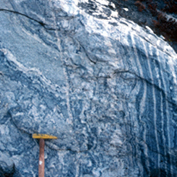
B) Three types of layering at dm scale |
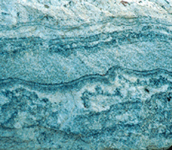
C) Layering and flower texture |
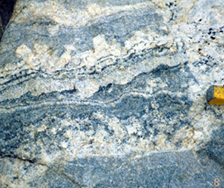
D) Comb layering (upper half) and flower texture (lower half) |
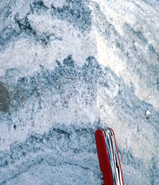
E) 3D repetitive and distorted layering |
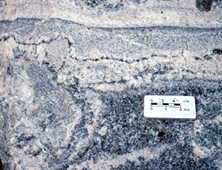
F) Layering and flower texture |
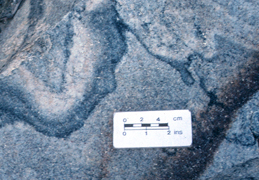
G) Complex tourmaline layering |
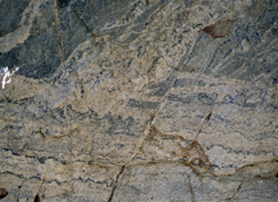
H) Layering defined by coarse feldspar. Note angular relationships |
Deformed Layering
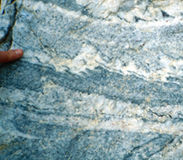
A)Leucogranite layering broken up and rotated ~20 o by deformation (thick black line). Notice small fold hinges filled with tml (arrow) |
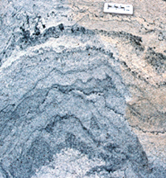
B) Magmatic fold and with weak axial planar foliation developed
|
Comb Layering

A)Comb layering
|
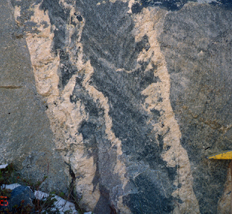
B) Dyke: K-feldspar pointing inwards at an angle to the walls. Growth controlled by stresses |
Relationship between melt-country rock and porphyroblasts
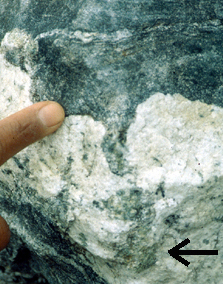 A) A finger of country rock in between magma lobes: 2 cordierite grains (arrow) grew at the end of the tip |
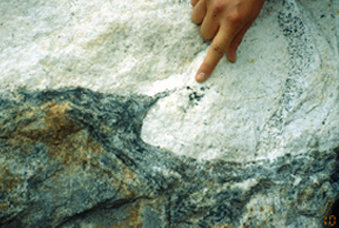
B) Finger caught up within a magma whirl. Large tml at tip. |
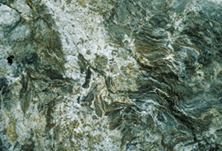
A) |
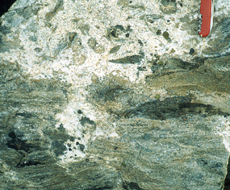
B) |
Pervasive melt intrusion
For more information see: Leitch, A.M.,and Weinberg, R.F. 2002, Mesoscale pervasive flow model for granite magma migration. Earth Planet. Sci. Lett. 200, 131-146.
Liked the structures? Want to know more? Contact me on my email
